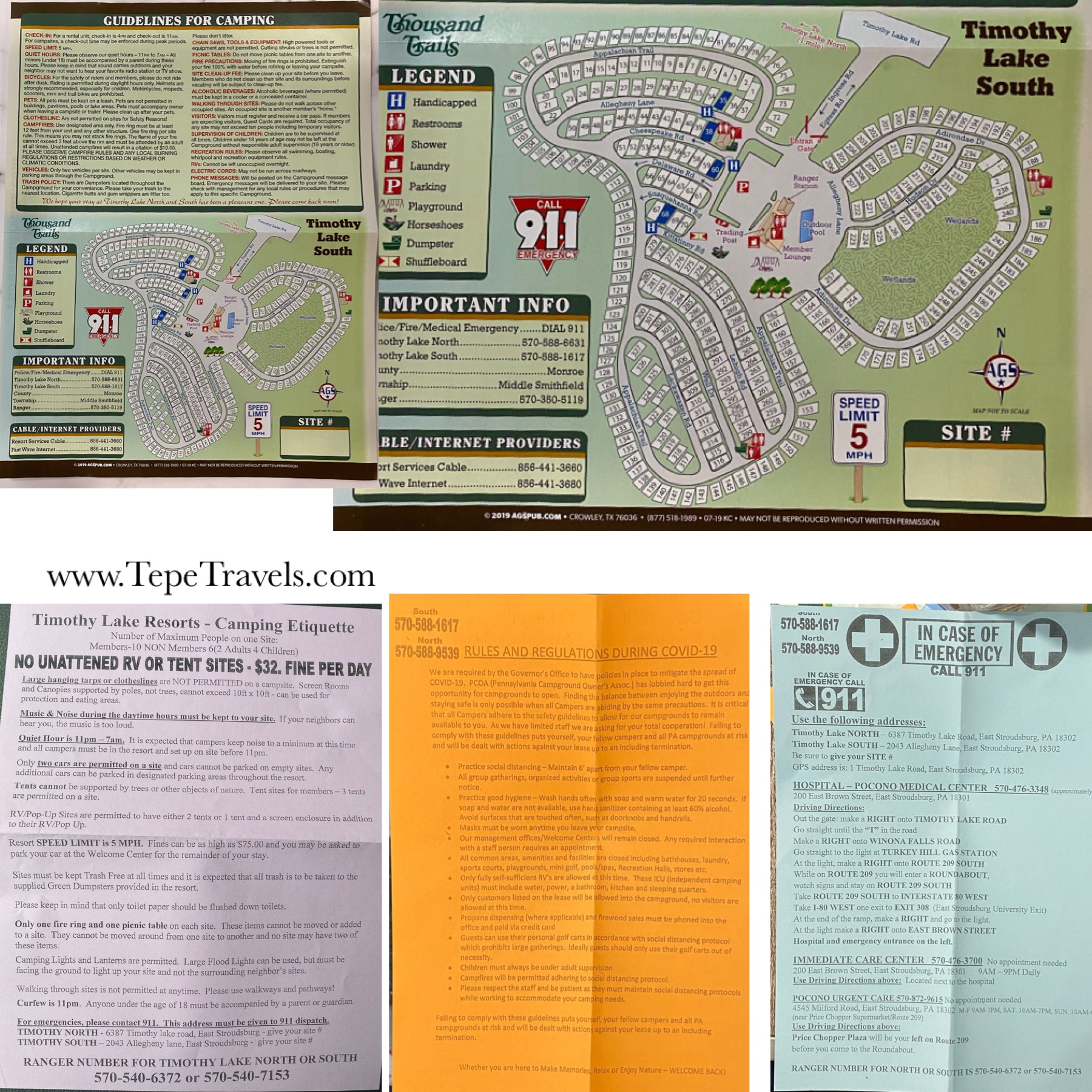Have you ever heard of East Stroudsburg in Pennsylvania? We hadn’t either! We stayed in Timothy Lake South RV Campground in East Stroudsburg, in the Poconos.
The campground offered quite a few pull-throughs and some back-ins. The back-in sites seemed mostly along the edges of the campground. Many of the pull-throughs were very long. We could have stayed hooked up to the truck it was so long. They were a little on the narrow side though. There were plenty of trees throughout the campground, so once the trees have all their leaves, I’m sure it will be quite shaded.
The campground had a laundry room and office/store. However, the store was closed for COVID. You could walk up to the check-in window to buy ice ($3/bag) and firewood. The campground had a sister site, Timothy Lake North, whose amenities you could also use (per the website, we did not go).

Laundry was $2.00 for washers (or $2.25 for super wash) and $1.75 for dryers. The laundry room was limited to 1 person at a time and you had to check out the key from the check-in window. Reservations were not accepted. They did not have quarters/change machine, although the machines were quarter run.
Our Verizon, AT&T, and T-Mobile were spotty around the campground and the mountain areas. We ended up paying for the campgrounds WiFi for the week to make sure we could connect for work and school. Even their internet was spotty at times. It was also not a very fast internet.
The campground was 12 minutes from Super Foodtown grocery store and 16 minutes from Price Chopper grocery store. There were several restaurants within a 20 minute drive. The Delaware Water Gap was also close (12 minutes to a close trail or 25-30 minutes to the hike we went on).
Getting There: I would take it slow on these roads. The roads are pretty narrow to fit two cars (especially one being a truck and RV) around some of the turns. The roads are hilly and twisty as well.
If you enjoy quiet with no electronics and lots of nature and hiking, you may enjoy this location. However, everything was closed in the campground (not including the laundry room) and there was just not a lot of things to do besides hiking (or kayaking if you had your own). We would not stay here again. If things were open, maybe it would have been a different experience.
SUMMARY OF CAMPGROUND:
Our rating: 2 out of 5 hitches
Cell Phone Reception: AT&T, Verizon, T-Mobile (all of our connections were slow/spotty depending on where we were in the park)
Laundry: Yes
Bathrooms/Showers: Yes
RV Sites: Pull-through and Back-in (grass)
Pop Up Tents/Gazebos/Outdoor Rugs On-Site: Yes
Amenities: picnic table/fire pit/grill at sites, playground, pool (closed for season while we were there), shuffleboard. (Paid for cable and WiFi)
Cabins: Yes
Tent Camping: No (sister site Timothy Lake North does)
Full Hook-ups: Yes
Amps: 20/30/50
Pool: Yes
Food On-Site: No
Camp Store: Yes, closed due to COVID
WiFi: No free WiFi, Paid WiFi (a little slow, not what I would call high-speed internet)
Accepts Mail: No
Fishing: No






































